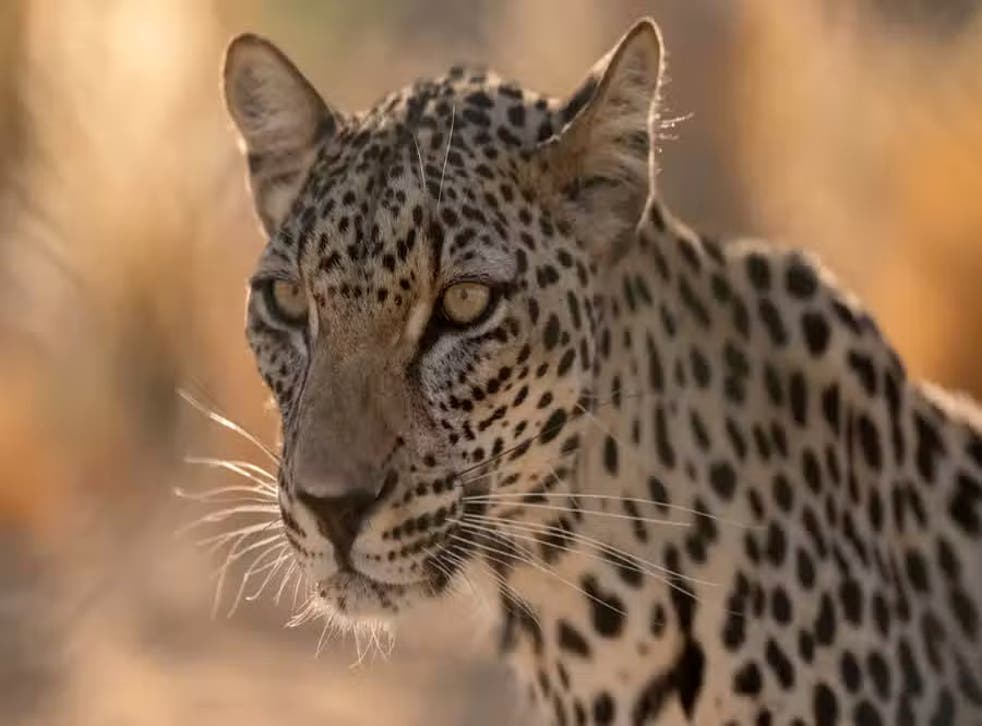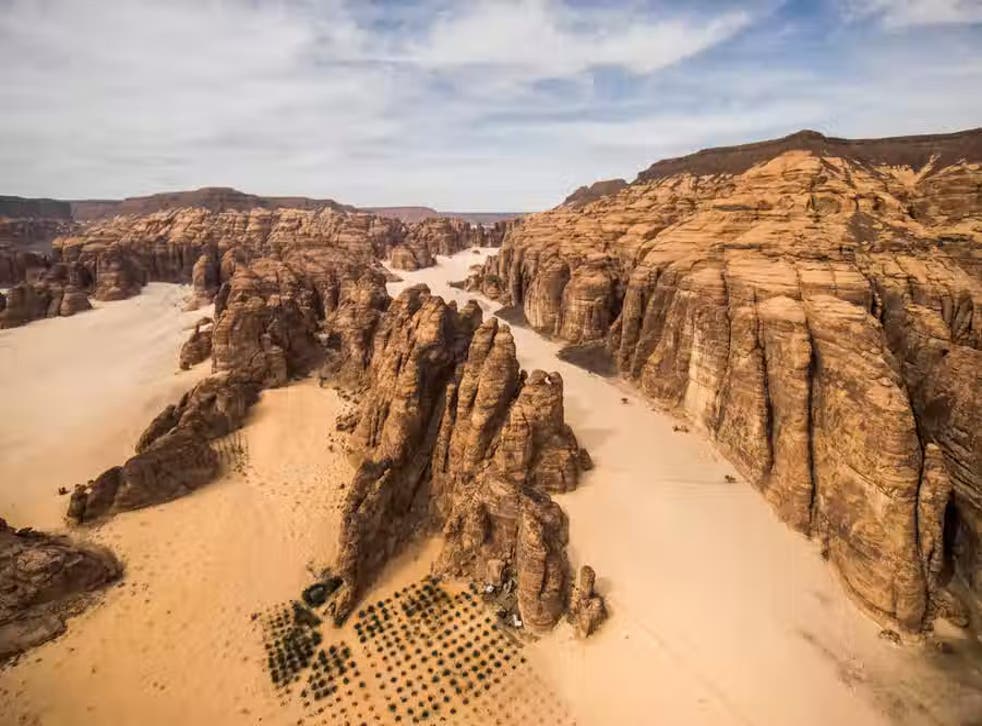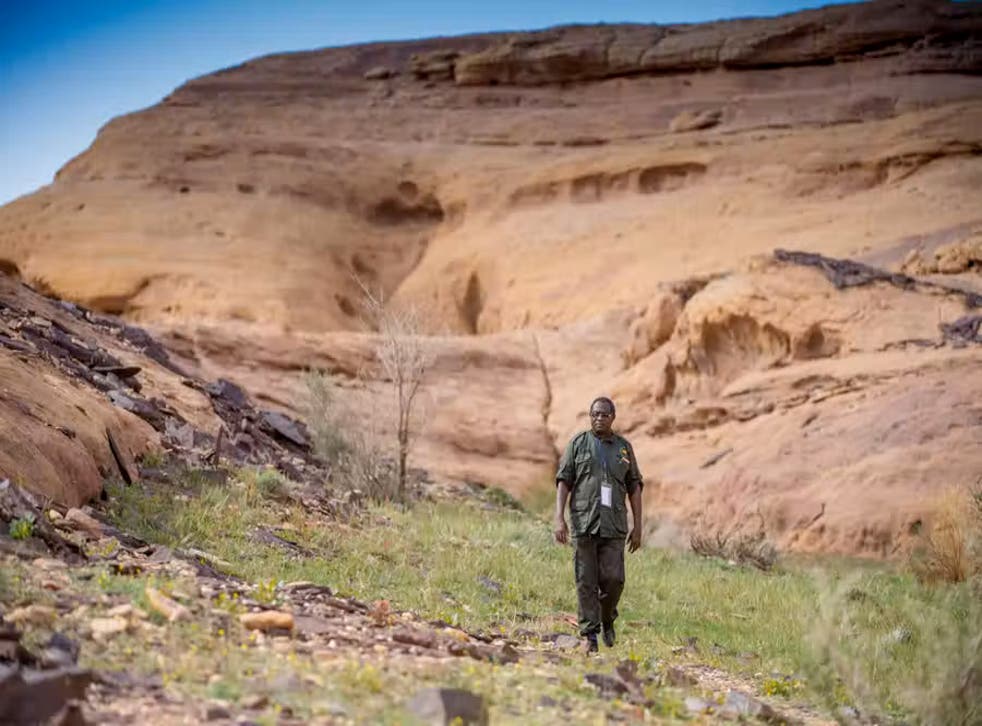
+- WildFact (https://wildfact.com/forum)
+-- Forum: Information Section (https://wildfact.com/forum/forum-information-section)
+--- Forum: Terrestrial Wild Animals (https://wildfact.com/forum/forum-terrestrial-wild-animals)
+---- Forum: Wild Cats (https://wildfact.com/forum/forum-wild-cats)
+----- Forum: Leopard (https://wildfact.com/forum/forum-leopard)
+----- Thread: Arabian leopard (/topic-arabian-leopard)
RE: Arabian leopard - Styx38 - 11-20-2020
@Lycaon
Arabian Leopards are the smallest subspecies.

*This image is copyright of its original author

*This image is copyright of its original author
source: The Leopard in the Arabian Peninsula – Distribution and Subspecies Status by James A. Spalton and Hadi M. Al Hikmani
The male Leopard weights are 24 kg, 26 kg, 29.5 kg and 34 kg. The average is 28.4 kg.
The female Leopard weights are 18 kg, 19 kg, 22 kg and 23.5 kg. The average is 20.6 kg.
RE: Arabian leopard - Lycaon - 11-20-2020
@
Indeed they are ,just remarking on how small they look next to a person.
RE: Arabian leopard - Luipaard - 02-20-2021
Rare footage of a mating pair

*This image is copyright of its original author
https://youtu.be/3LGoEFwVOmI
RE: Arabian leopard - Luipaard - 02-25-2021
"One of the few remaining Arabian leopards on the escarpment overlooking the plains of Dhofar"

*This image is copyright of its original author
miguelwillis
RE: Arabian leopard - Luipaard - 05-25-2021
RE: Arabian leopard - Sully - 07-20-2021
Born to be wild: A daring vision of the Arabian leopard’s future
RE: Arabian leopard - Luipaard - 10-02-2021
Sad news, but must be shared as well.
2 Arabian leopards were killed in Yemen:

*This image is copyright of its original author

*This image is copyright of its original author

*This image is copyright of its original author
Previously a female leopard was captured and tied to a tree trunk (click to play)

*This image is copyright of its original author

*This image is copyright of its original author
حماية النمور اليمنية من الانقراض Protect Yemeni tigers endangered
RE: Arabian leopard - Luipaard - 03-18-2022
"Arabian leopard that infiltrated a residence, released by Nature and Parks Authority inspectors"

*This image is copyright of its original author

*This image is copyright of its original author

*This image is copyright of its original author
inaturalist.org
RE: Arabian leopard - Luipaard - 04-07-2022
Arabian leopard from the Arabia's Wildlife Centre in Sharjah, UAE

*This image is copyright of its original author
Prof. Dr. Sc. Norman Ali Bassam Ali Taher Khalaf
RE: Arabian leopard - Luipaard - 05-24-2022
Arabian female with cub in Oman

*This image is copyright of its original author
Dr Hadi Al Hikmani
RE: Arabian leopard - AndresVida - 11-12-2022
the most impressive Arabian leopard I've seen , very heavily built for such small subspecies

*This image is copyright of its original author
RE: Arabian leopard - Matias - 11-13-2022
The last confirmed sighting of an Arabian leopard in the wild was in 2014. The animal was dead, poisoned by a camel herder.
You could see that as a low point. The leopard, which used to roam from the mountains of Anatolia to the shores of the Red Sea, is confined now to a few remote places in Oman, Yemen, UAE and the KSA. When it does encounter humans and their livestock, the inevitable result is fatal.
Perhaps that leopard did not die in vain, however. It proved that leopards were still present, albeit in heartbreakingly small numbers, in the Arabian Peninsula. In the years since, a huge and inspiring international effort has begun to preserve, breed and then release leopards back into the wild.
But what kind of wild? It isn’t just hunters and farmers who have pushed leopards to the extreme margins of survival. The great Arabian desert has become progressively more desertified, as overgrazing by goats and camels denudes the land. The species that leopards rely on as prey have themselves been pushed further towards extinction.

*This image is copyright of its original author
To bring back the leopard, first one must reintroduce its prey: a gazelle in the Sharaan nature reserves of AlUla
(David Chancellor)
In AlUla, an area of incredible natural beauty and priceless heritage in north-west Saudi Arabia, they are preparing a home for the leopard. This begins with developing protected areas: currently AlUla has five nature reserves covering 50% of the county (around 12,500 km2). The aim is to increase that to 85%, covering 20,000 km2.
The rewilding efforts will be focused on the best and most suitable 65,000 hectares for wildlife, repopulating these zones with prey species like onyx and ibex. Once the habitat and grazing animals are reestablished, and only then, can the conservationists begin to think of releasing leopards from centres such as the Royal Commission for AlUla’s (RCU) breeding facility in Taif.

*This image is copyright of its original author
An Arabian leopard
An inspiring project is bringing native flora and fauna – and hopefully even the Arabian leopard – back to the sands of northwest Saudi Arabia.
[b]The UK’s leading advocate of rewilding calls it ‘one of the most inspired projects in the whole world’. We are talking about the extraordinary efforts to transform AlUla, an area of ancient desert and oasis in northwest Saudi Arabia.[/b]
Last month, delegates at the International Exhibition and Forum on Afforestation Technologies, held in Riyadh, heard just how ambitious the Royal Commission for AlUla (RCU) plan is. By 2030, 65,000 hectares of degraded land will be ‘rehabilitated’. To put that in context, that is exactly the same area of Outstanding Natural Beauty managed by our own National Trust.
You can call the process rehabilitating or rewilding, but neither word captures the unique nature of this project. The human population is as important to the regeneration narrative as the flora and fauna.

*This image is copyright of its original author
Two thousand years ago, this would have been farmland but now much of the AlUla region is desert
The land around AlUla has been overgrazed by livestock, like these Najdi sheep – highly prized for their meat, milk and thick woolly coats
Put aside images of caravanserai and lines of camels silhouetted against the dunes. Today’s nomads are city dwellers who drive convoys of huge trucks and thousands of goats. They descend on a fertile area, graze it to the bone, then move on.
The winds blow, the topsoils vanish, nutrients in the soil are washed into the wadis. You’re left with sand, which can heat up to 100C during the day, shrivelling root systems. The desert sprawls ever wider.
Over the past few years, farmers and horticulturalists have significantly improved the vegetation cover. Native grazing animals like Nubian ibex and idmi gazelles have been slowly reintroduced.

*This image is copyright of its original author
[b]How to Rewild a Desert, step 1: Rehabilitate... AlUla’s nature reserves protect former grazing land to allow the overused landscapes to return to a more natural state, while giving local people employment as guides and rangers.[/b]
----------------------------------------------------------------------------------------------------------------------------------------------------------------------
The vision that the article conveys is inspiring, in the face of all the stakeholders involved and the notion of tourism strengthening this project, with support in culture, history, environment and sustainability.
If the goals are achieved, I have no doubt that it will be a milestone in the history of conservation.
It's surprises like this that feed our hope for the future.
If the goals are achieved, I have no doubt that it will be a milestone in the history of conservation.
It's surprises like this that feed our hope for the future.
RE: Arabian leopard - Luipaard - 11-25-2022
The size of an Arabian leopard compared to a man (Prof. Dr. Norman Ali Khalaf-von Jaffa)

*This image is copyright of its original author
https://www.facebook.com/photo/?fbid=10158655293804831&set=pcb.10158655293864831
RE: Arabian leopard - Luipaard - 01-20-2023
An Arabian leopard walking the same path as its main competitor, a caracal:

*This image is copyright of its original author
Arabian Daily
RE: Arabian leopard - TheHyenid76 - 08-09-2024
Information regarding the Arabian leopard (Panthera pardus nimr)
From 'Arabian leopard remains Critically Endangered' Authors: Hadi Al Hikmani & Andrew Spalton (the two greatest experts on Arabian leopards) LINK
Arabian leopards are critically endangered with about 100-120 individuals. Their numbers are decreasing and populations are fragmented (i.e the populations are scattered)
"The latest assessment shows a continuing decrease of the population compared to the 2008 assessment. The Arabian leopard remains Critically Endangered as the total population size is estimated at 100–120 individuals, with only 70–84 mature leopards. The population is highly fragmented (Fig. 1), and continuously declining, both in the area of occupancy and extent of occurrence, with no subpopulations having more than 50 mature individuals. Thus, the Arabian leopard, now listed under criterion C (small population size and decline C2a(i)), is close to being classified as Critically Endangered under criterion D (very small or restricted population)."
The Dhofar mountains of Oman are the main stronghold of the species in the region.
"The Dhofar mountains of southern Oman remain the last stronghold for the species in the wild outside the unclear situation in Yemen. More than two decades of conservation efforts have allowed safeguarding a small population of some 51 leopards. There is some evidence of range expansion since the 2008 assessment towards the semi-arid dry wadis of the Nejd region north of the Dhofar mountains. Although the Dhofar population seems to be stable, its small size is a significant risk factor. Conservation needs to include the continuous monitoring, active safeguarding of leopard habitat, and compensation programmes for livestock losses."

*This image is copyright of its original author
Distribution and conservation of the Arabian Leopard Panthera pardus nimr in Saudi Arabia LINK
Abstract
Field surveys of populations and potential habitats of leopards in Saudi Arabia were conducted to assess the current distribution and status of the species. Related topics such as habitat characteristics of the current distribution, prey of the species, the human impact and conservation of the species were also investigated. Survey results from 153 sites showed that leopards had disappeared from their former range in the Median Mountains in northern Saudi Arabia. The species still survives in reasonable numbers in Hijaz and Sarawat Mountains. In spite of their rugged and arid locations, many sites were found to have shrubs, trees and waterholes. These sites provide habitat for the leopard's prey, such as hyrax, ibex and others. Results of this investigation reveal that there is a need for public awareness, involvement of local inhabitants, and establishment of protected areas to ensure the survival of the Arabian leopard.
The Saudi Government are pouring a lot of efforts in collaboration with Panthera to a captive breeding program to reintroduce leopards back to the wild.
A leopard killed in Yemen. Source. A camera trap image of a leopard in Oman. Source.

*This image is copyright of its original author

*This image is copyright of its original author
Here is a conversation I had with Dr. Andrew Spalton regarding the interactions between leopards and wolves in the Arabian peninsula.
Me: In your research about Arabian leopards, have you ever come across any instance of wolves and leopards interacting and which one is the dominant species across in the Arabian peninsula? Thank you and all the best
Dr Spalton: Our only record is from a camera trap and it showed two wolves leaving an area very quickly and then a single leopard arriving.
Me: Thank you for the information. Could this be interpreted as wolves being scared of leopards and avoiding them?
Dr Spalton: Yes. Correct

*This image is copyright of its original author
This information is consistent with leopard interactions with wolves in Iran. Wolves avoid leopards and there are confirmed instances of leopards killing them. The Persian Leopard Project writes:
"Wolves tend to avoid habitat sharing with leopards but they can both be observed in the Steppe area of the Golestan National Park."

*This image is copyright of its original author
Key information derived from this post:
- The Arabian leopard is a critically endangered animal
- In Yemen, they persist in small numbers but they are often hunted and killed for sport
- Oman is the main stronghold for Arabian leopards and that is where most of the conservation efforts have been put in
- In Saudi, the leopards may persist in very small numbers that are not viable
- The Saudi Government is doing great work to captive breed leopards and reintroduce them to the wild
- In the Arabian peninsula, leopard is the dominant predator and wolves avoid them